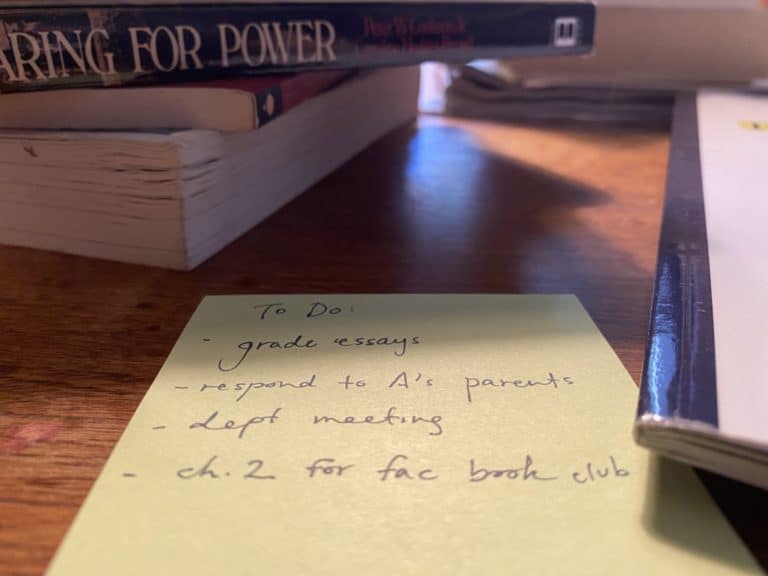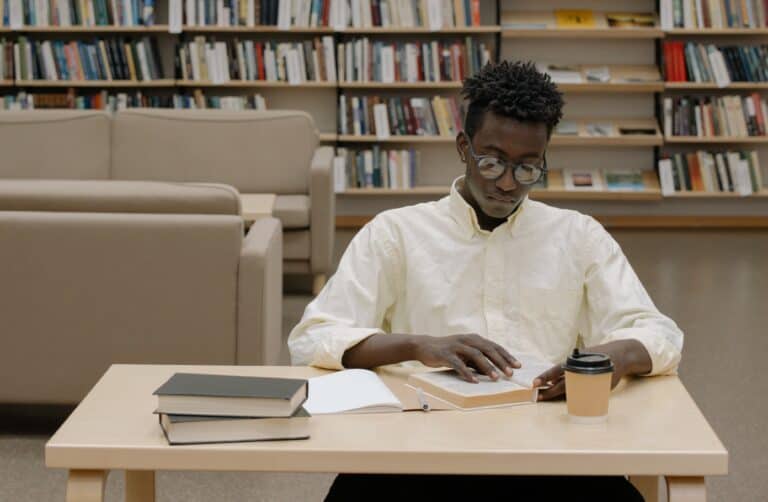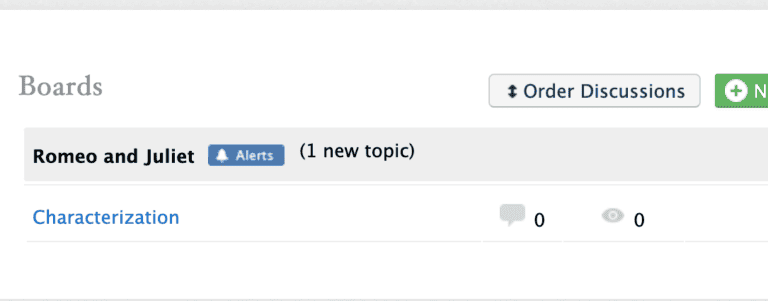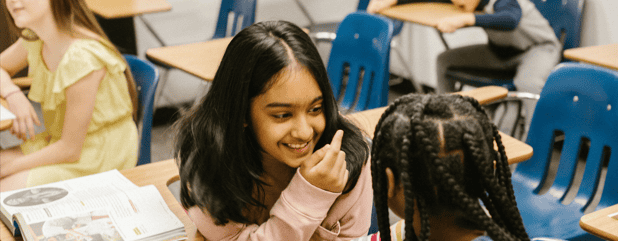REAL Teacher Feature: David Barndollar
Thank you to David Barndollar for sharing his REAL life with us! David is the English department chair at Shady Side Academy in Pittsburgh, PA. Here are his thoughts on discussion, R.E.A.L.®, and learning.
Hometown: Houston, TX
Current City, School, Teaching Assignments:
English Department Chair at Shady Side Academy.

Describe yourself as a student in three words:
Earnest, thorough, detail-oriented.
Who was your favorite teacher and why?
One of my favorite teachers was my AP Chemistry teacher. He set pretty high standards, but he also made sure that what we were doing was interesting and could always fit it into the bigger picture of what we were doing.
When it comes to class discussion, what is your “why”? What feels compelling and important about teaching these skills?
For me, the “why” is to give my students the practice they need: in putting together ideas, in linking evidence and conclusions, in responding to points of view they hadn’t thought about, and in infusing a bit more flexible thinking and a bit more curiosity into the everyday work of the classroom. For me, that’s the why. It’s central to a lot of what I do, and mostly where I do R.E.A.L.® Discussion work is with my sophomores. It helps them practice the things that we’re really trying to get at.
Take us back to the first R.E.A.L.® Discussion you led – what were you worried about going into it? What surprised you about it?
The worry is that students may be satisfied with an easy conclusion: someone says something, and someone says something else, and that’s it. But the question is somewhat more complex than that.
The way I worked through all that was that in my classes I really prioritize the preparation phase of things. When they’re going back to the text, they have to have some specific examples. When I review their portfolios, I mark down if they’ve clearly just tried to check the box without any genuine thought — and there are kids who have tried to do that, and they don’t do very well, because it’s clear that they didn’t do the preparation work. And then unsurprisingly, they don’t have much to say in those discussions.
It absolutely tracks that the preparation is what makes you want to know something — it makes you want to talk about it, it makes you curious about it.
When it comes to discussion, what are your top 3 learning goals for your students?
For me the key learning is when students can express a well-supported thought in a reasonably clear way, can respond in real-time to other perspectives that might not necessarily jive with their own, and can take into account new evidence in the moment.
Ultimately, the goal would be that the students are not doing “hub and spoke” discussions with the teacher. They can start to carry the load and respond to each other and start getting involved in that way. When students figure that out, some of them say, “oh, well, this is just a lot more interesting. Yes, that’s the idea. It’s meant to be. But it means you have to bring something to discussion, so having those skills is important.
Putting on your department chair hat: what are your goals? How has R.E.A.L.® played a role in thinking through what class discussion actually looks like?
One of the things that has been nice is that because it’s a shared resource across sections of a class, because our colleagues in history are using R.E.A.L.® too, what it tells students is that there’s a there there. This is something that is not just touchy-feely, teacher subjective, made up. It helps us tell students: There are actual skills, actual practices, and actual expectations that we value, and this is how we’re going to help you do the things we value. Having that consistency is super useful.
Can you think of a moment you’ve experienced this year or last where a student had a breakthrough during a discussion? What did it look like? How did that feel as a teacher? Did you see it have an impact on the other students?
I think the breakthrough moments happen when students start to ask the questions they’ve brought, and then the question leads to another question. And then they start to pursue their own discussion, with it being explicitly required. That, and they find themselves running up against the time limit, saying: oh, well, we really need to move on, but we haven’t finished this section yet. We really want to talk about more of this. That’s great. For me, it’s checking all the boxes I’m looking for: I want them to be sincerely present and engaged really in that moment.
Those times when time kind of stops for them and they’re not really aware of it — to me, that is a great thing.
What tips would you give department chairs on implementing R.E.A.L.®?
For me, the hardest part is convincing people to do something new and unfamiliar. So for me, the most important part of everything we’ve done with R.E.A.L.® is to explain to faculty how it can be integrated into what they’re already doing, and how it’s flexible enough to accommodate some of those differences in the way teachers do things.
And as a department chair, it has been huge to present R.E.A.L.® to different constituents in different ways. One of the things that has been incredibly valuable for us has been to be able to talk about the way R.E.A.L.® promotes equity and inclusion in ways that are useful.






